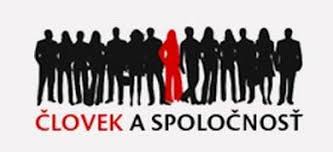Beyond Czech and Slovak differences in Hofstede´s Masculinity index: An investigation of cross-cultural differences using Hofstede’s and Schwartz’s framework
Beyond Czech and Slovak differences in Hofstede´s Masculinity index: An investigation of cross-cultural differences using Hofstede’s and Schwartz’s framework
Author(s): Ivan Brezina, Jana Bašnáková, Tomáš SollárSubject(s): Psychology, Evaluation research, Demography and human biology, Sociology of Culture
Published by: SAV - Slovenská akadémia vied - Spoločenskovedný ústav SAV
Keywords: Dimensions of National Culture; Masculinity; Individual Value Types; VSM 2013; PVQ21;
Summary/Abstract: A number of studies adopting either Hofstede ́s Cultural Values Survey approach or Schwartz ́s concept of Value Types have documented major distinctions in value preferences between Czechs and Slovaks. The most prominent one has been represented either by the dimension of Masculinity (as constructed by Hofstede) or value type of Achievement (a concept of Schwartz); both defined by similar content, stressing the importance of success, achievement and competence. In all the five published comparisons so far – two based on Cultural Values Survey by Geert Hofstede (Kolman, Norderhaven, Hofstede, & Dienes, 2003, Bašnáková, Brezina and Masaryk, 2016) and three on value types by Shalom Schwartz (Schwartz & Bardi, 1997, Schwartz, Bardi & Bianchi, 2000 and Ilgová & Ritomský, 2009), -- Slovak participants scored higher in both Masculinity (MAS) and Achievement. Interestingly, Slovakia´s MAS score reported by Kolman et al. (2003) reached one of the highest values of all the surveyed countries with the VSM instrument, thus becoming an international outlier. As we concluded in our previous report of cross-cultural differences in Bašnáková et al. (2016), it remains puzzling why two nations that share a similar geographical and historical context would differ on the Masculinity dimension by such a large margin. In this study, we therefore aim to explore this difference in more detail. For that purpose, we contrasted two matched samples of Czech (N=200) and Slovak (N=200) participants representative of the two populations. In essence, we believe that there are two possibilities behind the difference in Masculinity. Firstly, the reported difference between Czechs and Slovaks is psychologically valid and therefore can be explained in terms of another number of cultural dimensions, such as the value system by Schwartz, and/or by underlying demographic factors. However, we cannot a-priori exclude a more mundane reason for the difference. Secondly, that it is simply an artefact of the questionnaire brought about by a small number of outlying items; for example because there are systematic differences in how participants in the two countries interpret a particular item. In order to differentiate between these two positions, and create a more grounded reference, we focused our analysis on three issues: (1) Identification of demographic factors that relate to Masculinity in both samples, (2) Comparison of Masculinity with Schwartz’s individual value types, (3) Analysis of the items constituting the Masculinity index. As for demographic factors, there is a possibility that the difference between Czechs and Slovaks on Masculinity is caused by some underlying factor(s), which in itself is not a cultural-psychological dimension of value differences but can explain the level of a studied value.
Journal: Človek a spoločnosť
- Issue Year: 22/2019
- Issue No: 1
- Page Range: 16-33
- Page Count: 18
- Language: English

